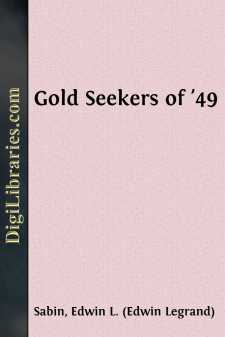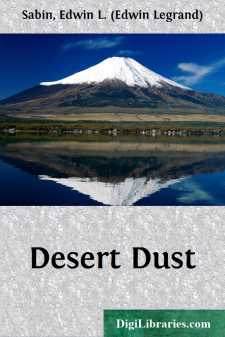Categories
- Antiques & Collectibles 13
- Architecture 36
- Art 48
- Bibles 22
- Biography & Autobiography 813
- Body, Mind & Spirit 142
- Business & Economics 28
- Children's Books 16
- Children's Fiction 13
- Computers 4
- Cooking 94
- Crafts & Hobbies 4
- Drama 346
- Education 46
- Family & Relationships 57
- Fiction 11829
- Games 19
- Gardening 17
- Health & Fitness 34
- History 1377
- House & Home 1
- Humor 147
- Juvenile Fiction 1873
- Juvenile Nonfiction 202
- Language Arts & Disciplines 88
- Law 16
- Literary Collections 686
- Literary Criticism 179
- Mathematics 13
- Medical 41
- Music 40
- Nature 179
- Non-Classifiable 1768
- Performing Arts 7
- Periodicals 1453
- Philosophy 64
- Photography 2
- Poetry 896
- Political Science 203
- Psychology 42
- Reference 154
- Religion 513
- Science 126
- Self-Help 84
- Social Science 81
- Sports & Recreation 34
- Study Aids 3
- Technology & Engineering 59
- Transportation 23
- Travel 463
- True Crime 29
Gold Seekers of '49
Description:
Excerpt
THE STORY OF CALIFORNIA
1542—On September 28, 1542, Captain Juan Rodriguez Cabrillo, a Portuguese navigator in the service of Spain, on a voyage of exploration along the coast northward from Mexico casts anchor of his two small ships, the San Salvador and the Victoria, in San Diego Bay. He christens it the Puerta de San Miguel (Port of Saint Michael). Thence his ships explore north clear to the line of present Oregon. Mid-voyage he dies from an accident, and is buried on San Miguel Island, opposite present Santa Barbara. The exploration is continued by his lieutenant, Bartolome Ferrelo.
1579—In June, 1579, Sir Francis Drake, English adventurer, lands near the Bay of San Francisco, to overhaul his ship, the Golden Hind. He takes possession of the shore for Queen Elizabeth, christens it New Albion, and erects a monument. His bay is called Francis Drake's Bay.
1587—The Bay of Monterey visited, according to description, in 1587, by the Spanish navigator Pedro de Unamunu, in his ship Nuestra Señora de la Esperança (Our Lady of Hope). He lands and erects a cross, and christens the place Puerta de San Lucas (Port of Saint Luke), taking possession for the King of Spain.
1595—In 1595 the Spanish navigator Sebastian Rodriguez Cermeno is wrecked in Francis Drake's Bay, to which he gives the name Bay of San Francisco. This was a small bay behind Point Reyes, north of the entrance to the Golden Gate.
1602—Cabrillo's Port of San Miguel entered in 1602 by the Spanish navigator Sebastian Vizcaino, with four vessels: the San Diego (Saint James), the Santo Tomas (Saint Thomas), the Tres Reyes (Three Kings), and a launch. He christens the bay San Diego. Voyaging further, he rediscovers the Port of San Lucas, and christens it Monterey, in honor of the Count of Monterey, the ruler for Spain in Mexico.
1769—Sent out by Comandante José de Galvez, inspector general for Spain in Mexico, in 1769 the first expedition by land ascends from Lower California of Mexico into Alta (Upper) California. It is in two parties, one commanded by Captain Rivera y Moncada and accompanied by the Franciscan priest Padre Juan Crespi, the other commanded by Gaspar de Portola, governor of the Californias for Spain, and accompanied by the Franciscan priest Padre Junipero Serra. The object was to establish three Franciscan missions—one at San Diego, one at Monterey, one at San Francisco; and at Monterey a town and a fort. By sea set forth, with another expedition, and with supplies, the ships San Carlos (Saint Charles), San Antonio (Saint Anthony), and San José (Saint Joseph). The San José was disabled at the start. The meeting place was to be San Diego. Here, July 16, 1769, the mission of San Diego de Arcala is founded.
1769—November 2, 1769, the present Bay of San Francisco is discovered, from a hill, by some soldiers in the party of Gaspar de Portola, who had led an expedition northward from San Diego, to search for Monterey.
1770—June 3, 1770, the mission of San Carlos Borromeo de Monterey is founded....





